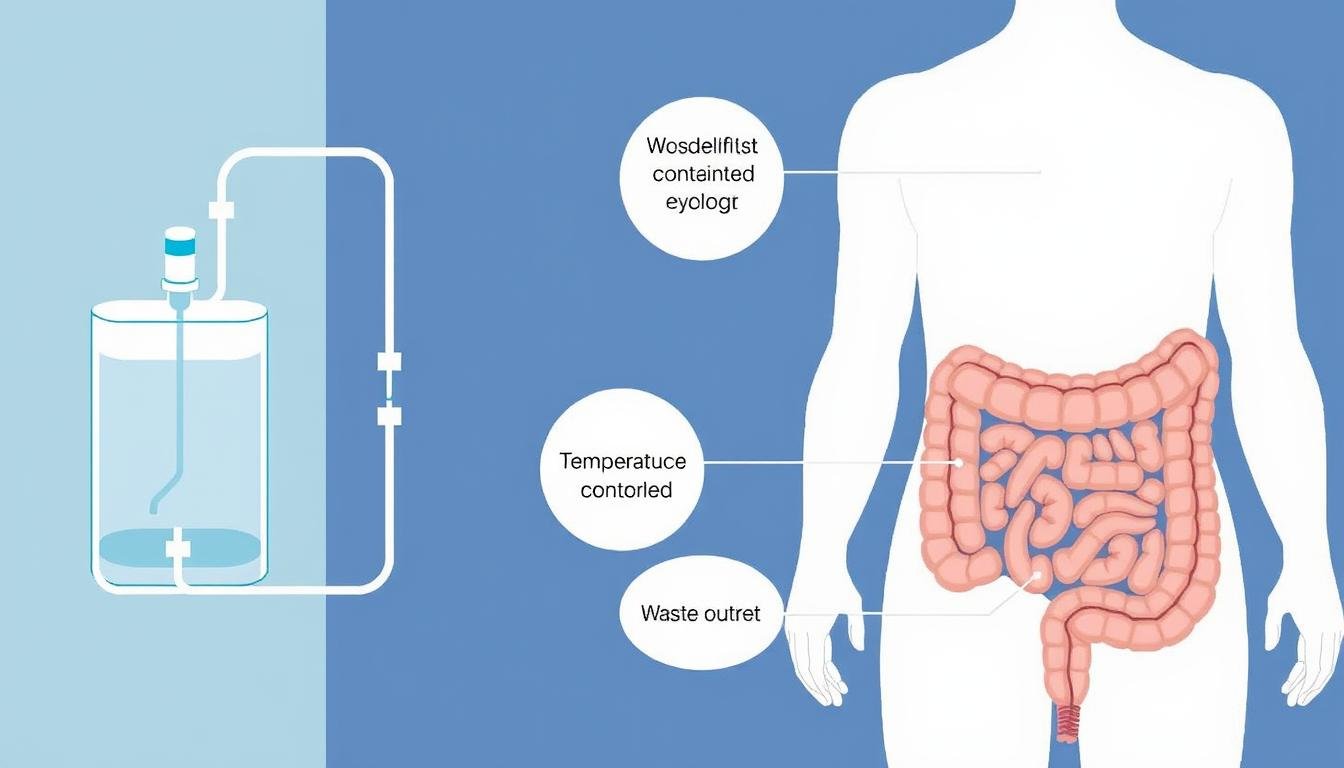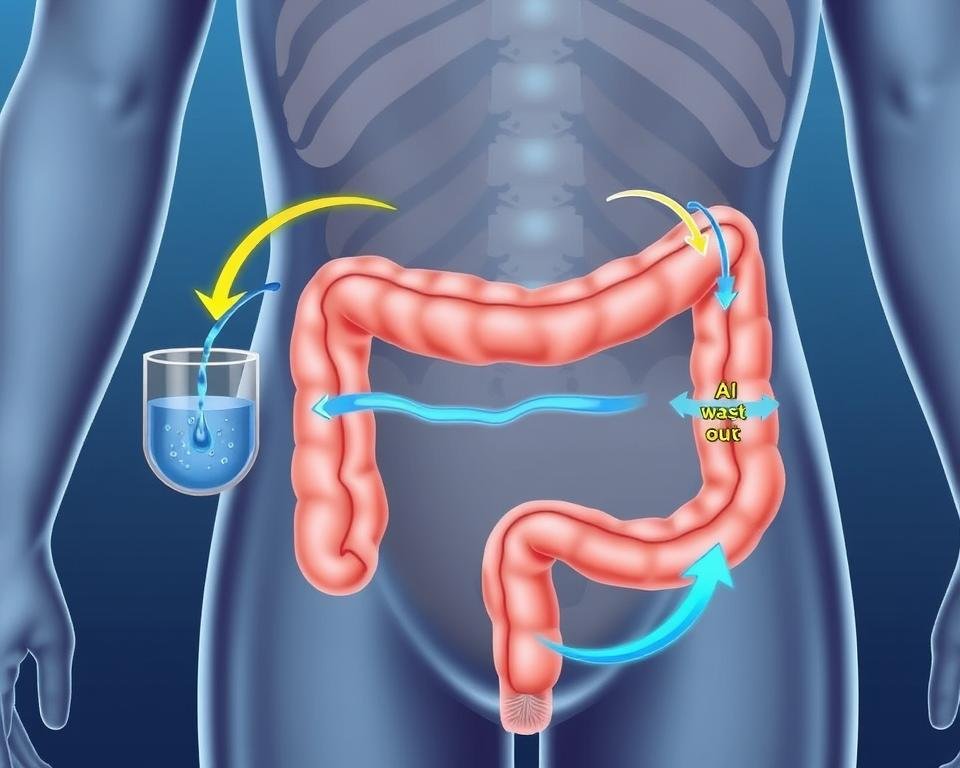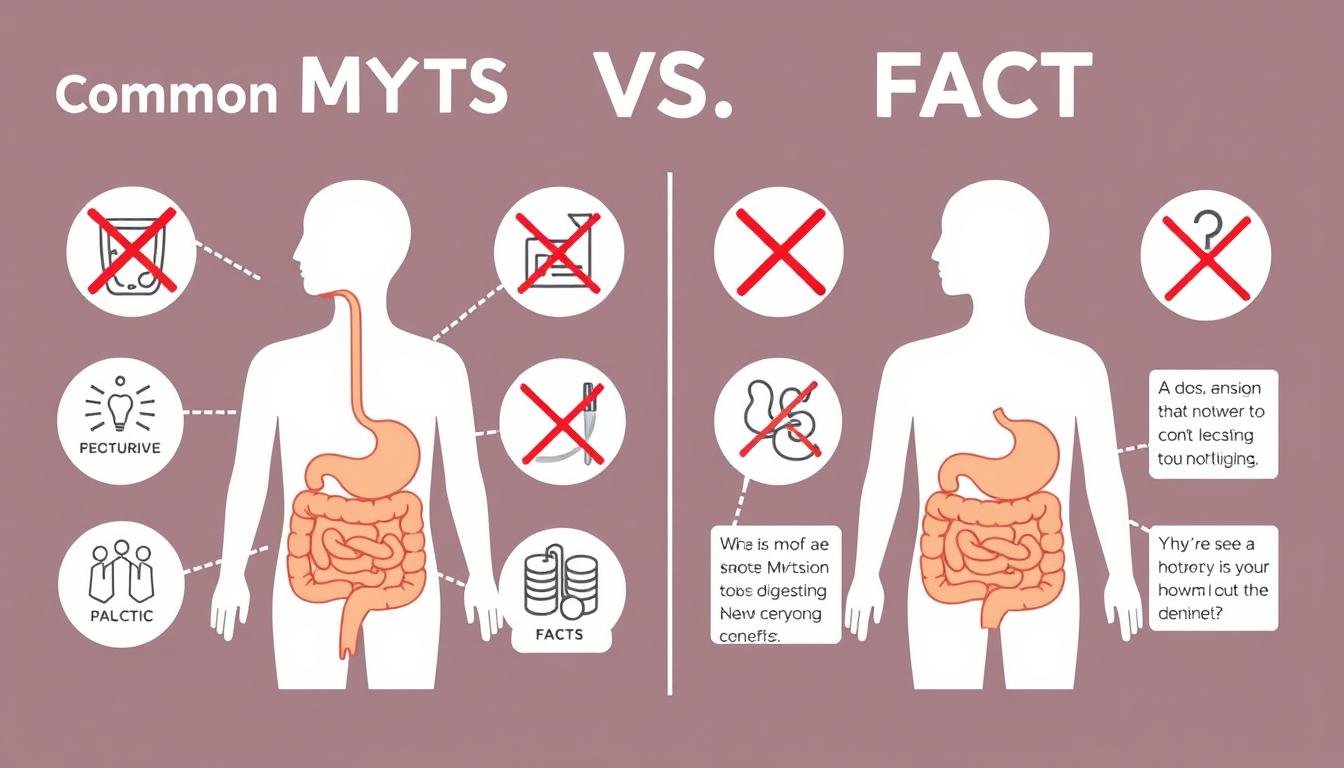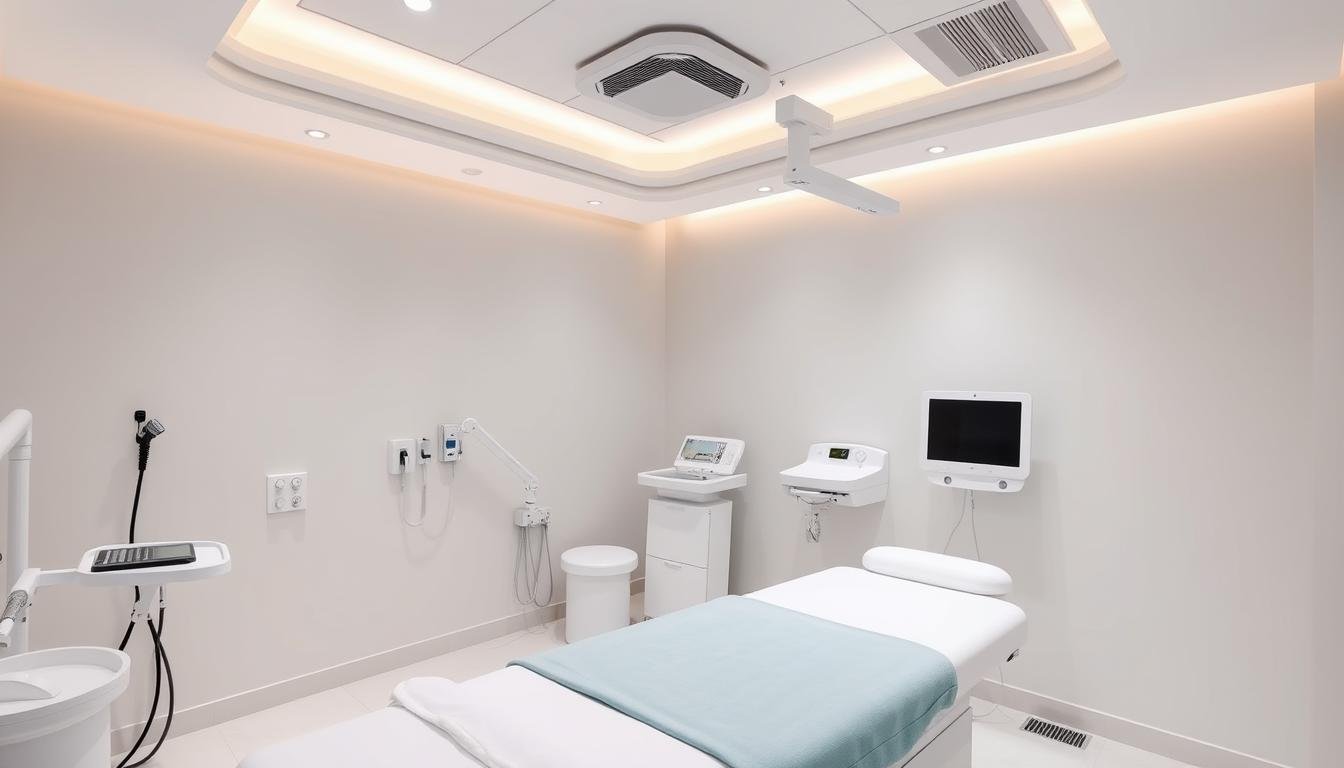Kolon Hydrotherapy Aparèy Manifakti
Nan gid sa a konplè, nou pral mache ou nan tout pwosesis la kolon, ki soti nan preparasyon pou swivi, ede ou pran yon desizyon enfòme sou tretman sa a byennèt.

Ki sa ki idroterapi kolon?
Kolon idroterapi, ki rele tou irigasyon kolon oswa yon kolon, se yon pwosedi ki ka geri ki fèt pou netwaye kolon an pa entwodwi dlo cho, filtre nan dèyè a. Pwosesis sa a ede retire akimile dechè, toksin, ak gaz ki soti nan gwo trip la, ki kapab fè pwomosyon pi bon sante dijestif la.
Kontrèman ak yon lavman, ki tipikman netwaye sèlman pati ki pi ba nan kolon an, yon kolon pwofesyonèl gen pou objaktif pou netwaye tout gwo trip la. Pwosedi a jeneralman fèt pa yon espesyalis ki resevwa fòmasyon ki rele yon hydrotherapis kolon nan yon anviwònman klinik.
Mande si hydrotherapy kolon se bon pou ou?
Pwoblèm dijestif ka siyifikativman enpak sou kalite lavi ou. Pale ak yon pratik ki kalifye pou aprann si idroterapi kolon ta ka ede adrese enkyetid espesifik ou yo.
Ki jan yon kolon travay?
Konprann mekanik yo nan ki jan yon kolon travay ka ede fasilite nenpòt arèstasyon sou pwosedi a. Pwosesis la enplike nan plizyè konpozan kle k ap travay ansanm pou netwaye san danje kolon an.
Ekipman kolon an

Ekipman kolon modèn tipikman karakteristik yon sistèm fèmen ak plizyè eleman enpòtan:
- Yon kabann espesyalize oswa tab kote ou pral kouche alèz pandan pwosedi a
- Yon rezèv dlo ki kontwole tanperati a ki kenbe dlo nan yon tanperati ki san danje, konfòtab
- Jetab, tib esteril pou livrezon dlo ak retire fatra
- Kontwòl presyon asire koule dlo dou
- Yon tib gade (nan kèk sistèm) ki pèmèt terapis la kontwole fatra a ke yo te elimine
Pwosedi a etap-pa-etap
Isit la ki jan yon sesyon tipik kolon travay:
- Premye evalyasyon: Anvan ou kòmanse, idroterapis la pral revize istwa sante ou epi diskite sou objektif ou pou tretman an.
- Preparasyon: Ou pral mande yo chanje nan yon ròb epi yo pral byen vlope pou vi prive. Terapis la ap kite sal la pandan w ap pozisyone tèt ou alèz sou tab la.
- Ensèsyon: Terapis la pral dousman mete yon ti, jetab espekilòm nan dèyè ou. Se espekilòm sa a ki konekte nan de tib - youn pou konsomasyon dlo pwòp ak youn pou eliminasyon dechè.
- Perfusion dlo: Se cho, dlo filtre tou dousman prezante nan kolon an. Tanperati a ak presyon yo ak anpil atansyon kontwole pou konfò ak sekirite.
- Massage: Terapis la ka aplike limyè masaj nan vant pou ede lage fatra ak gaz.
- Eliminasyon dechè: Kòm dlo plen kolon an, peristaliss natirèl kò ou la (kontraksyon nan misk) ede pouse soti demare materyèl fatra nan tib la fatra.
- Repete pwosesis: Sa a se pwosesis ranpli ak lage repete plizyè fwa pandan sesyon an 45-60 minit.
- Konplete: Yon fwa sesyon an konplè, yo retire espekilòm lan, epi ou pral bay vi prive pou itilize twalèt la si sa nesesè.

Dyagram: Ki jan dlo ap koule nan kolon an pandan idroterapi
Colonics vs nan-lakay lavman: Konprann diferans ki genyen yo
Pandan ke tou de kolon ak lavman enplike entwodwi dlo nan kolon an, gen diferans enpòtan ant pwosedi sa yo:
| Patikilarite | Pwofesyonèl kolon | Nan-kay lavman |
| Zòn netwaye | Tout kolon (apeprè 5 pye) | Pi ba pòsyon nan kolon sèlman |
| Volim dlo | Plizyè galon nan tout sesyon | 1-2 ka tipikman |
| Dire | 45-60 minit | 5-15 minit |
| Kalite Sistèm | Fèmen sistèm (dechè sòti nan tib) | Open sistèm (dechè ekspilse nan twalèt) |
| Sipèvizyon pwofesyonèl | Fèt pa espesyalis ki resevwa fòmasyon | Oto-administre |
| Ekipman | Pwofesyonèl-klas ak tanperati ak kontwòl presyon | Twous debaz ak kontwòl limite |
Pandan ke lavman nan kay la ka bay soulajman tanporè pou konstipasyon, yo pa ofri netwayaj konplè ke yon kolon pwofesyonèl ka bay. Anplis de sa, move administrasyon nan lavman nan kay ka mennen nan konplikasyon.
Benefis potansyèl de idroterapi kolon

Defandè nan idroterapi kolon sijere plizyè benefis potansyèl, menm si li enpòtan yo sonje ke rechèch syantifik sou benefis sa yo se limite. Gen kèk benefis souvan rapòte yo enkli:
Benefis dijestif yo
- Soulajman nan konstipasyon ak mouvman entesten iregilye
- Rediksyon nan gonfleman ak gaz
- Amelyorasyon potansyèl nan sentòm sendwòm entesten chimerik (livr)
- Amelyore fonksyon dijestif
Benefis Jeneral Byennèt
- Ogmante enèji ak vitalite
- Amelyore klè mantal
- Sipò pou pwosesis dezentoksikasyon
- Amelyorasyon potansyèl nan kondisyon po
RECHÈCH REMAK: Yon ti etid pilòt ki te pibliye nan 2016 nan jounal la Teknik nan Coloprooctology te jwenn ke kèk patisipan ki gen sendwòm entesten chimerik rapòte amelyorasyon nan sentòm apre irigasyon kolon. Sepandan, etid la te limite pa gwosè ti li yo (18 patisipan yo) ak mank de yon gwoup kontwòl.
Risk ak konsiderasyon

Pandan ke anpil moun sibi kolon san konplikasyon, pwosedi a pote sèten risk ki ta dwe ak anpil atansyon konsidere:
Risk potansyèl nan idroterapi kolon
- Dezidratasyon ak elektwolit move balans: Pwosedi a ka deranje likid kò a ak balans elektwolit.
- Enfeksyon: Si ekipman yo pa byen esterilize oswa si bakteri ki soti nan rektòm lan prezante nan kolon an.
- Pèrforasyon entesten: Menm si ra, presyon ki soti nan dlo a te kapab potansyèlman domaje miray la entesten.
- Dezòd nan mikwòb nan zantray: Kolonik ka lave lwen bakteri benefis ki sipòte sante dijestif la.
- Malèz: Gen kèk moun ki fè eksperyans kranp, kè plen, oswa vètij pandan oswa apre pwosedi a.
Ki moun ki ta dwe evite kolonik
Hydrotherapy Colon pa apwopriye pou tout moun. Ou ta dwe evite pwosedi sa a si ou gen:
- Resan operasyon nan vant
- Aktif maladi enflamatwa entesten (maladi Crohn a, kolit emorajik)
- Diverticulitis
- Emoroid oswa rektal/anal fant
- Maladi ren
- Maladi kè
- Emoroid grav
- Grosès
“Gen ti prèv ki montre netwayaj kolon pwodui efè sa yo oswa se benefisye nan tout. An reyalite, netwayaj kolon yo ka pafwa danjere.”
Konsène sou sante dijestif?
Anvan ou eseye hydrotherapy kolon, konsilte avèk yon founisè swen sante yo diskite sou si li la ki apwopriye pou sitiyasyon sante espesifik ou.
Ki sa ki atann: anvan, pandan, ak apre
Anvan kolon ou

Bon preparasyon ka ede asire yon eksperyans kolon pi efikas ak konfòtab:
- Hydrasyon: Bwè anpil dlo nan jou ki mennen jiska randevou ou.
- Rejim: Evite lou, manje trete pou 24-48 èdtan anvan sesyon ou an. Konsantre sou pi lejè manje ak legim.
- Distribisyon: Pa manje yon gwo repa nan 2 èdtan nan randevou ou.
- Istwa medikal: Prepare pou diskite sou istwa sante ou ak nenpòt enkyetid dijestif ak terapis ou.
Pandan kolon ou
Konprann kisa k ap pase pandan pwosedi a ka ede fasilite enkyetid:
- Duration: Yon sesyon tipik dire 45-60 minit.
- Privacy: Ou pral byen anvlope pou modesti nan tout pwosedi a.
- Sansasyon: Ou ka santi ou yon tou sa ki dou tankou dlo antre nan kolon an ak soulajman modere kòm fatra yo elimine.
- Kominikasyon: Terapis ou a ta dwe tcheke nan regilyèman sou nivo konfò ou.
Aprè kolon ou

Swen pòs-pwosedi enpòtan pou maksimize benefis yo ak minimize nenpòt efè segondè potansyèl:
- Hydrasyon: Bwè anpil dlo pou ranplir likid.
- Probiotik: Konsidere pran yon sipleman pwojyotik pou ede retabli bakteri nan zantray benefisye.
- Repoze: Gen kèk moun ki santi yo kouran apre yon kolon, pandan ke lòt moun ka santi yo fatige. Koute kò ou.
- Rejim: Manje limyè, fasil dijèstibl manje pou pwochen 24 èdtan yo.
- Chanjman twalèt: Ou ka remake chanjman nan mouvman entesten ou pou pwochen jou yo kòm reekilibran sistèm ou an.
Mit komen sou kolonik

Lejann: Colonics ka geri maladi grav
Reyalite: Pandan ke kèk défenseur reklamasyon kolon ka trete oswa geri kondisyon grav tankou kansè nan oswa maladi auto -immunes, pa gen okenn prèv syantifik ki sipòte reklamasyon sa yo. Kolonik yo ta dwe wè li kòm yon pratik byennèt konplemantè, pa yon tretman medikal pou kondisyon grav.
Lejann: Tout moun gen liv nan dechè toksik bati nan kolon yo
Reyalite: Kolon an sante pa plen ak “Waste toksik” Sa ki te akimile pou ane. Pwosesis eliminasyon natirèl kò a travay kontinyèlman pou retire fatra. Pandan ke konstipasyon ka lakòz tanporè backup, lide a nan alontèm akimilasyon dechè jeneralman ekzajere.
Lejann: Colonics yo nesesè pou dezentoksikasyon
Reyalite: Kò a gen pwòp sistèm dezentoksikasyon sofistike li yo, sitou fwa a ak ren yo. Pandan ke kolon yo ka ede ak soulajman tanporè nan konstipasyon yo, yo pa nesesè pou kò a elimine toksin efektivman.
Lejann: Colonics yo konplètman risk-gratis
Reyalite: Kòm diskite nan seksyon an risk, kolon fè pote risk potansyèl ki gen ladan dezidratasyon, move balans elektwolit, ak nan ka ki ra, pèrforasyon entesten. Yo pa apwopriye pou tout moun, patikilyèman moun ki gen sèten kondisyon medikal.
Kesyon yo poze souvan sou kolonik yo
Èske yon kolon fè mal?
Pifò moun ki jwenn kolon alèz, men se pa douloure. Ou ka fè eksperyans santiman nan plen, presyon, oswa kranp modere kòm dlo antre nan kolon an ak fatra yo lage. Yon pratikan kalifye ap travay pou asire konfò ou pandan tout pwosedi a.
Konbyen tan yon kolon pran?
Yon sesyon tipik kolon dire ant 45 minit nan yon èdtan. Sa gen ladan premye preparasyon, pwosedi aktyèl la, ak yon peryòd repo kout apre sa.
Konbyen kolonik mwen ta dwe genyen?
Sa a varye depann sou objektif sante endividyèl ak kondisyon. Gen kèk pratik ki rekòmande yon seri de sesyon 3-6 espace sou plizyè semèn pou netwayaj inisyal, ki te swiv pa sesyon antretyen jan sa nesesè. Toujou konsilte avèk yon founisè swen sante anvan ou kòmanse nenpòt ki rejim tretman.
Èske mwen pral pèdi pwa nan yon kolon?
Ou ka fè eksperyans pèdi pwa tanporè akòz retire elèv la nan materyèl fatra ak dlo. Sepandan, kolon yo pa yon solisyon pèdi pwa, ak nenpòt ki pwa pèdi se tipikman avèg jan ou manje ak bwè nòmalman.
Èske yon kolon anbarasan?
Pwofesyonèl hydrotherapis kolon yo resevwa fòmasyon yo kenbe diyite ou ak konfò. Ou pral byen anvlope nan tout pwosedi a, ak ekipman an sistèm fèmen minimize odè ak dezòd. Pifò kliyan jwenn eksperyans nan mwens anbarasan pase yo antisipe.

Jwenn yon idroterapis kolon ki kalifye
Si ou ap konsidere idroterapi kolon, li esansyèl pou jwenn yon pratik ki kalifye, ki gen eksperyans:
- Sètifikasyon: Gade pou terapis ki sètifye pa òganizasyon rekonèt tankou Asosyasyon Entènasyonal pou Hydrotherapy Colon (I-ACT) oswa Global Pwofesyonèl Asosyasyon an pou Terapi Colon (GPACT).
- Etablisman: Klinik la ta dwe pwòp, pwofesyonèl, epi sèvi ak FDA-anrejistre ekipman yo.
- Eksperyans: Mande enfòmasyon sou fòmasyon terapis la ak konbyen tan yo te pratike.
- Revi: Tcheke revizyon sou entènèt epi mande pou referans soti nan kliyan sot pase yo.
- Konsiltasyon: Yon bon terapis pral ofri yon konsiltasyon anvan premye tretman ou pou diskite sou istwa sante ou epi reponn kesyon.
Pare pou aprann plis sou idroterapi kolon?
Si ou ap konsidere tretman sa a, pwochen etap la se pale ak yon pwofesyonèl ki kalifye ki moun ki ka adrese enkyetid sante espesifik ou ak objektif.
Konklizyon: Èske idroterapi kolon bon pou ou?
Kolon idroterapi ofri yon apwòch inik nan byennèt dijestif ke gen kèk moun ki jwenn benefisye. Pandan ke prèv syantifik pou anpil nan benefis reklame li yo limite, anpil moun rapòte eksperyans pozitif ak pwosedi a.
Menm jan ak nenpòt pratik byennèt, li enpòtan pou apwoche idroterapi kolon ak atant reyalis ak yon konpreyansyon sou tou de benefis potansyèl ak risk. Ki sa ki travay byen pou yon sèl moun ka pa apwopriye pou yon lòt.
Anvan ou eseye idroterapi kolon, konsilte avèk founisè swen sante ou, espesyalman si ou gen kondisyon sante ki egziste deja. Yon pwofesyonèl medikal ki kalifye ka ede w detèmine si pwosedi sa a aliyen ak objektif sante jeneral ou yo ak bezwen yo.
Sonje ke idroterapi kolon ta dwe konplete, pa ranplase, pratik vi ansante tankou nitrisyon apwopriye, fè egzèsis regilye, idratasyon apwopriye, ak jesyon estrès -tout nan yo ki kontribye anpil nan sante dijestif ak an jeneral.
